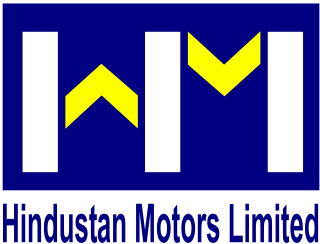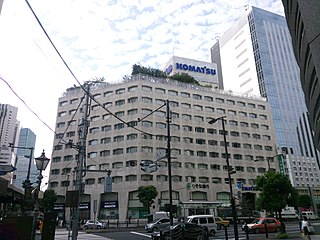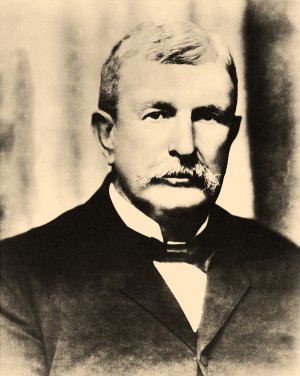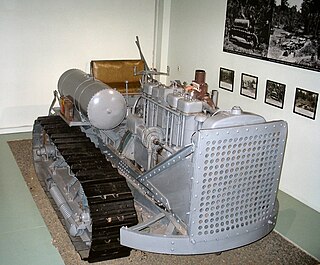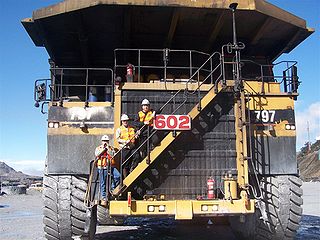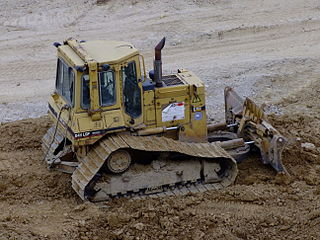| Company or asset acquired | Location | Date | Acquired from | Products | Notes |
|---|
| Trackson | Milwaukee, Wisconsin, United States | 1951 [53] | | Traxcavators (tracked loaders) and pipelayers | "Traxcavator" became a Cat brand |
| Towmotor Corporation | Mentor, Ohio, United States | 1965 [54] | | Forklifts | In 1992 became Mitsubishi Caterpillar Forklifts, a joint venture 80% owned by Mitsubishi Heavy Industries. Marketed under both the Towmotor and Caterpillar brands – the Caterpillar brand changed to Cat Lift Trucks [55] |
| Solar Division and Turbomach Division | San Diego, California, United States | 1981 [56] | International Harvester Company | Industrial gas turbines | Became Solar Turbines Incorporated, a wholly owned subsidiary of Caterpillar Inc. |
| Balderson, Inc. | Wamego, Kansas, United States | 1990 [57] | Balderson, Inc. | Work Tools for Construction and Mining Equipment, e.g. buckets, blades, forks | The name of Balderson, Inc., was changed to Caterpillar Work Tools, Inc. in 1998 and remains a wholly owned subsidiary of Caterpillar Inc. |
| Barber-Greene Co. Inc. | Minneapolis, Minnesota, United States | 1991 [58] | | Paving products | Renamed Caterpillar Paving Products |
| Krupp MaK Maschinenbau GmbH | Kiel, Germany | 1997 [59] [60] | Fried. Krupp GmbH | Marine diesel engines | Renamed MaK Motoren GmbH, a wholly owned subsidiary of Caterpillar Inc. and will continue to use the MaK brand name. |
| Perkins Engines | Peterborough, United Kingdom | 1998 [61] | LucasVarity | Small diesel engines | Produces both Cat- and Perkins-branded engines |
| Kato Engineering | Mankato, Minnesota, United States | 1998 [62] | Rockwell Automation, Inc. | Large electrical generators | |
| F.G. Wilson | Larne, Northern Ireland | 1999 [63] [64] | Emerson Electric Company | Generators, produces both Cat- and Olympian-branded generators | Asset swap, Emerson acquired Kato Engineering from Caterpillar as part of transaction. |
| Earthmoving Equipment Division | Chennai, India | 2000 [65] | Hindustan Motors Ltd. | Construction equipment | Renamed Caterpillar India, and the service and maintenance are provided by Birla Group's GMMCO Ltd. |
| Caterpillar Elphinstone | Burnie, Australia | 2000 [66] | Elphinstone | Underground mining equipment | Acquired 50% interest in joint venture from partner Elphinstone, renamed Caterpillar Underground Mining |
| Sabre Engines Ltd. | Wimborne, United Kingdom | 2000 [67] | Sabre Group Ltd. | Marine diesel engines | Renamed Caterpillar Marine Power UK, produces both Cat- and Perkins-Sabre-branded engines |
| Bitelli SpA | Minerbio, Italy | 2000 [68] | | Asphalt pavers, cold planers, compactors and other road maintenance products | Merged into Caterpillar Paving Products |
| Wealdstone Engineering Ltd. | Rushden, United Kingdom | 2004 [69] | | Remanufacturer of gasoline and diesel engines | Organized under Caterpillar Remanufacturing Services |
| Williams Technologies, Inc. | Summerville, South Carolina, United States | 2004 [69] | Delco Remy International Inc. | Remanufacturer of automatic transmissions, torque converters and engines | Organized under Caterpillar Remanufacturing Services |
| Turbomach SA | Riazzino, Switzerland | 2004 [70] | Babcock Borsig AG | Packager of industrial gas turbines and related systems | |
| Progress Rail | Albertville, Alabama, United States | 2006 [71] [72] | One Equity Partners | Supplier of railroad and transit system products and services, owner of Electro-Motive Diesel | |
| Hindustan PowerPlus Ltd. | Mathagondapalli, Tamil Nadu, India | 2006 [73] [74] | Hindustan Motors | Engine components and heavy-duty diesel engines | Buyout of joint venture formed in 1988, renamed Caterpillar Power India Private Ltd., merged into Caterpillar India in 2008 |
| Eurenov S.A.S. | Chaumont, France | 2007 [75] [76] | | Automotive component remanufacturing | Organized under Caterpillar Remanufacturing Services |
| Forestry Division of Blount International, Inc. | Portland, Oregon, United States | 2007 [75] [77] | Blount International, Inc. | Timber harvesting and processing equipment, loaders and attachments | |
| Shandong Engineering Machinery (SEM) | China | 2008 [78] | | Wheel loaders | |
| Lovat Inc. | Toronto, Ontario, Canada | 2008 [79] | | Tunnel boring machines | 2 April 2008: "This acquisition is Caterpillar's entry into the rapidly expanding tunnel boring machine business, and it represents an excellent strategic fit for our companies and the customers we serve around the world," – Stu Levenick, Caterpillar group president. 2 May 2013: "We continuously evaluate our strategic portfolio to ensure alignment with our long-term strategy and have concluded the tunneling business no longer fits that strategy," – Stu Levenick. Caterpillar Tunneling Canada Corporation (CTCC) have notified employees that it will exit the business and cease production at its facilities by mid-2014. |
| Shin Caterpillar Mitsubishi Ltd. | Sagami & Akashi, Japan | 2008 [79] [80] | Mitsubishi Heavy Industries | Construction equipment | Joint venture since 1963, after purchase of majority renamed Caterpillar Japan Ltd. |
| MGE Equipamentos & Serviços Ferroviários | Diadema, São Paulo, Brazil | 2008 [81] [82] | | Railroad equipment remanufacturing | Subsidiary of Progress Rail |
| Gremada Industries, Inc. | West Fargo, North Dakota, United States | 2008 [83] [84] | Gremada Industries, Inc. | Remanufacturing transmissions, torque converters, and final drives | Organized under Caterpillar Remanufacturing Services |
| Twin City Signal Inc. | Hudson, Wisconsin, United States | 2008 [85] | | Signaling, traffic control | Division of Progress Rail |
| JCS Co., Ltd. | Yangsan City, Kyungnam, South Korea | 2009 [86] [87] | Jinsung T.E.C. Co., Ltd. | Seal technology | |
| GE Inspection Products | Erie, Pennsylvania, United States | 2010 [88] | GE Transportation | Rail inspection products | Division of Progress Rail |
| FCM Rail Ltd. | Fenton, Michigan, United States | 2010 [89] [90] | | Rail maintenance equipment leasing | Division of Progress Rail |
| Zeit Comercio e Montagem de Equipamentos Ltda | Curitiba, Parana, Brazil | 2010 [91] | | Automation and electrical equipment for locomotives and other industries | Acquired by MGE, a division of Progress Rail |
| Electro-Motive Diesel | La Grange, Illinois, United States | 2010 [92] | Greenbriar Equity Group LLC, Berkshire Partners LLC, et al. | Railroad locomotives and large diesel engines | Wholly owned subsidiary of Progress Rail |
| Underground Imaging Technologies, Inc. (UIT) | Latham, New York, United States | 2010 [93] | | Geophysical services, specializing in providing three-dimensional representations of underground utilities | Organized under Cat Advanced Systems Division |
| Caterpillar Xuzhou Ltd | Xuzhou, China | 2010 [94] | XCMG Group | Construction equipment | Joint venture since 1995, will become wholly owned subsidiary Caterpillar Xuzhou |
| CleanAIR Systems, Inc. | Santa Fe, New Mexico, United States | 2010 [95] | | Customized stationary aftertreatment solutions for internal combustion engines | Wholly owned subsidiary of Caterpillar Inc. organized under Customer Services Support Division |
| MWM Holding GmbH | Mannheim, Germany | 2010 [96] [97] | 3i Group Plc | Gas and diesel powered generator sets | will become part of Caterpillar's Electric Power division (formerly Deutz Power Systems division of Deutz-Fahr) |
| Bucyrus International, Inc. | South Milwaukee, Wisconsin, United States | 2011 [98] [99] | | Surface and underground mining equipment | Transaction closed without issuing new equity on July 8, 2011, in firm's largest acquisition ever, valued at $8.8 billion. |
| Pyroban Group Ltd | Shoreham, UK | 2011 [96] [100] | | Fire and explosion prevention solutions for engines and equipment | |
| Berg Propulsion | Hönö, Gothenburg, Sweden | 2013 [101] | | Controllable-pitch propellers for the marine industry | |
| Marble Robot, Inc. | San Francisco, California, USA | 2020 [102] | | Robotics, machinery for groceries, prescriptions, and package delivery | |



















